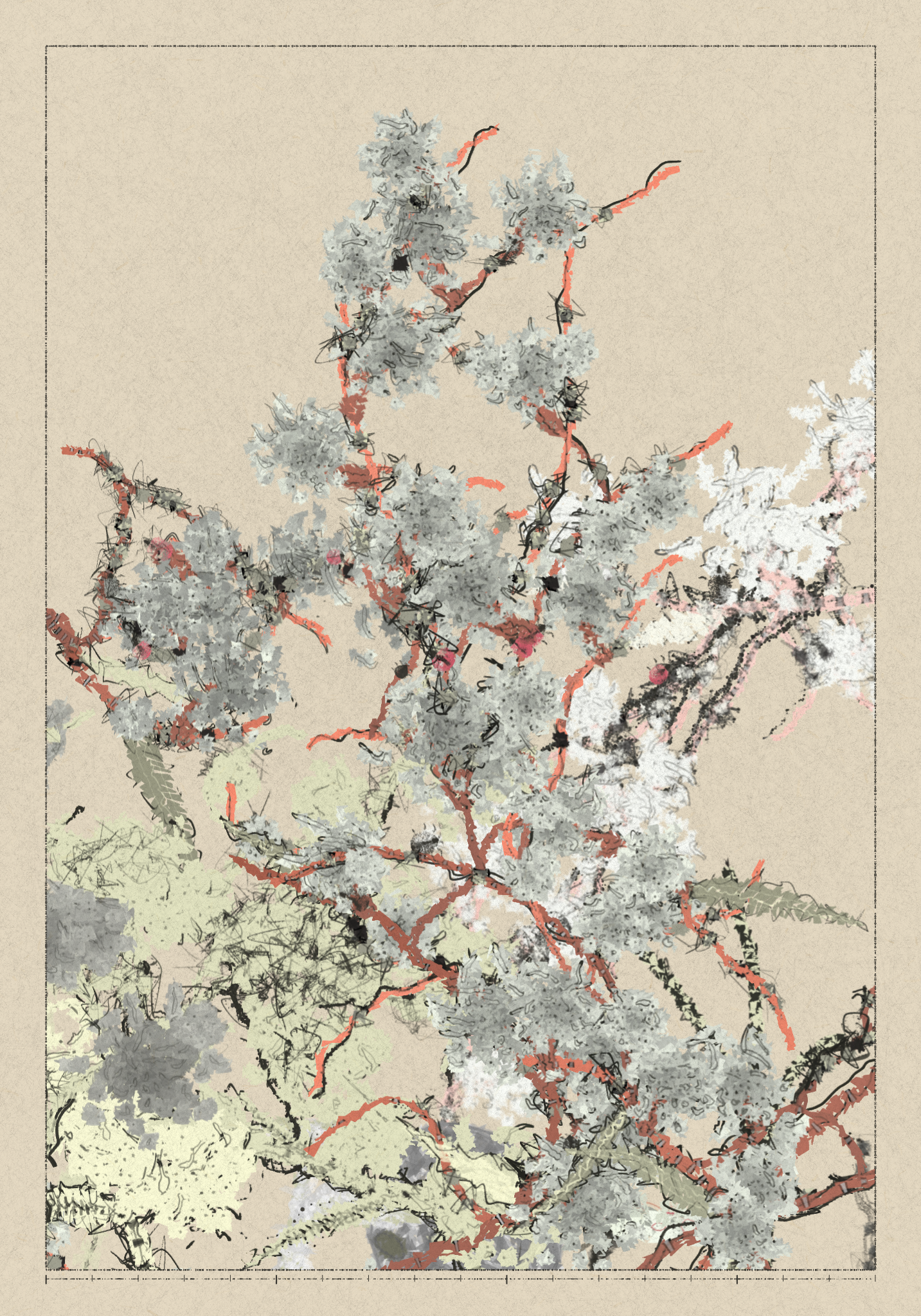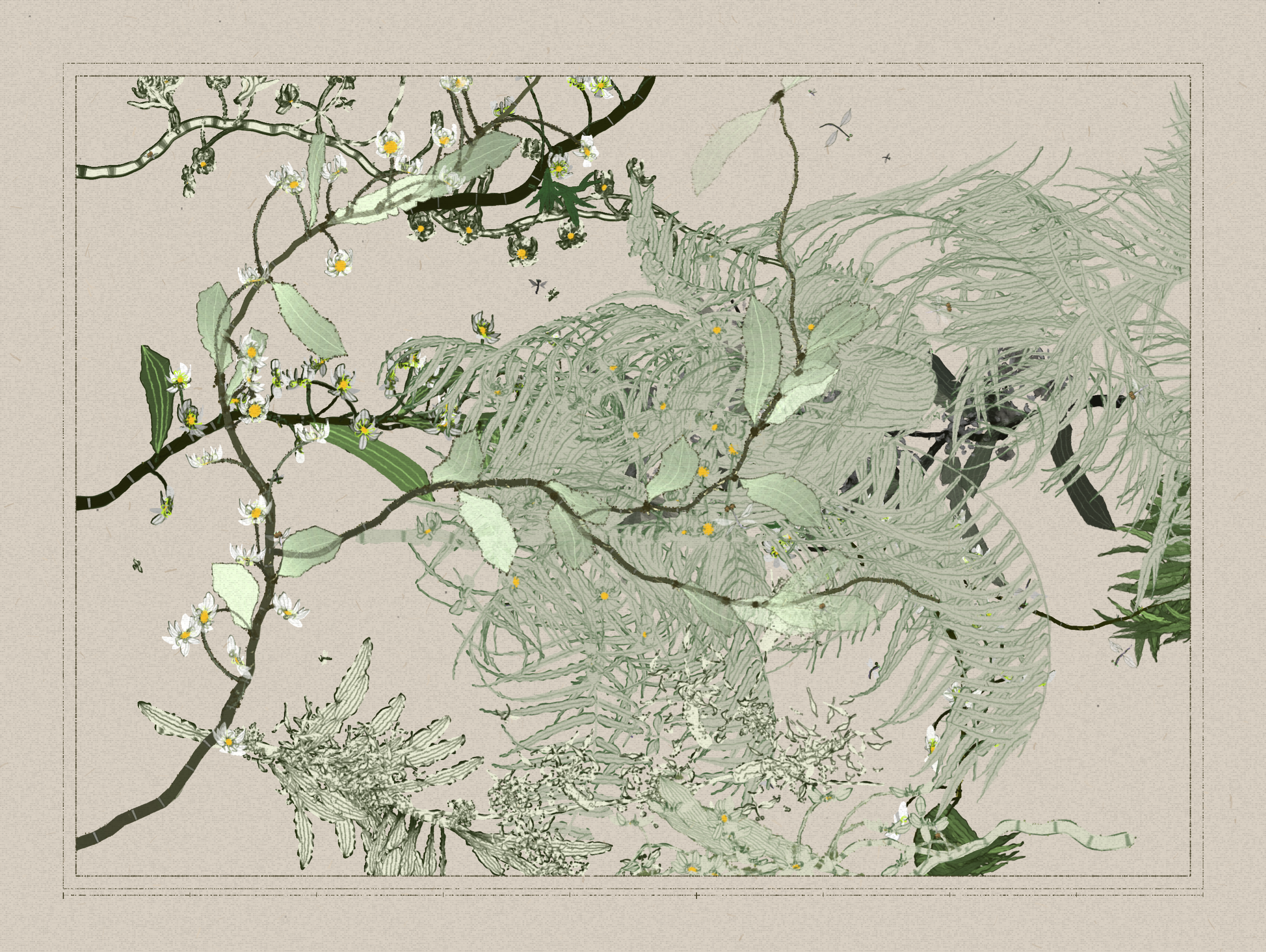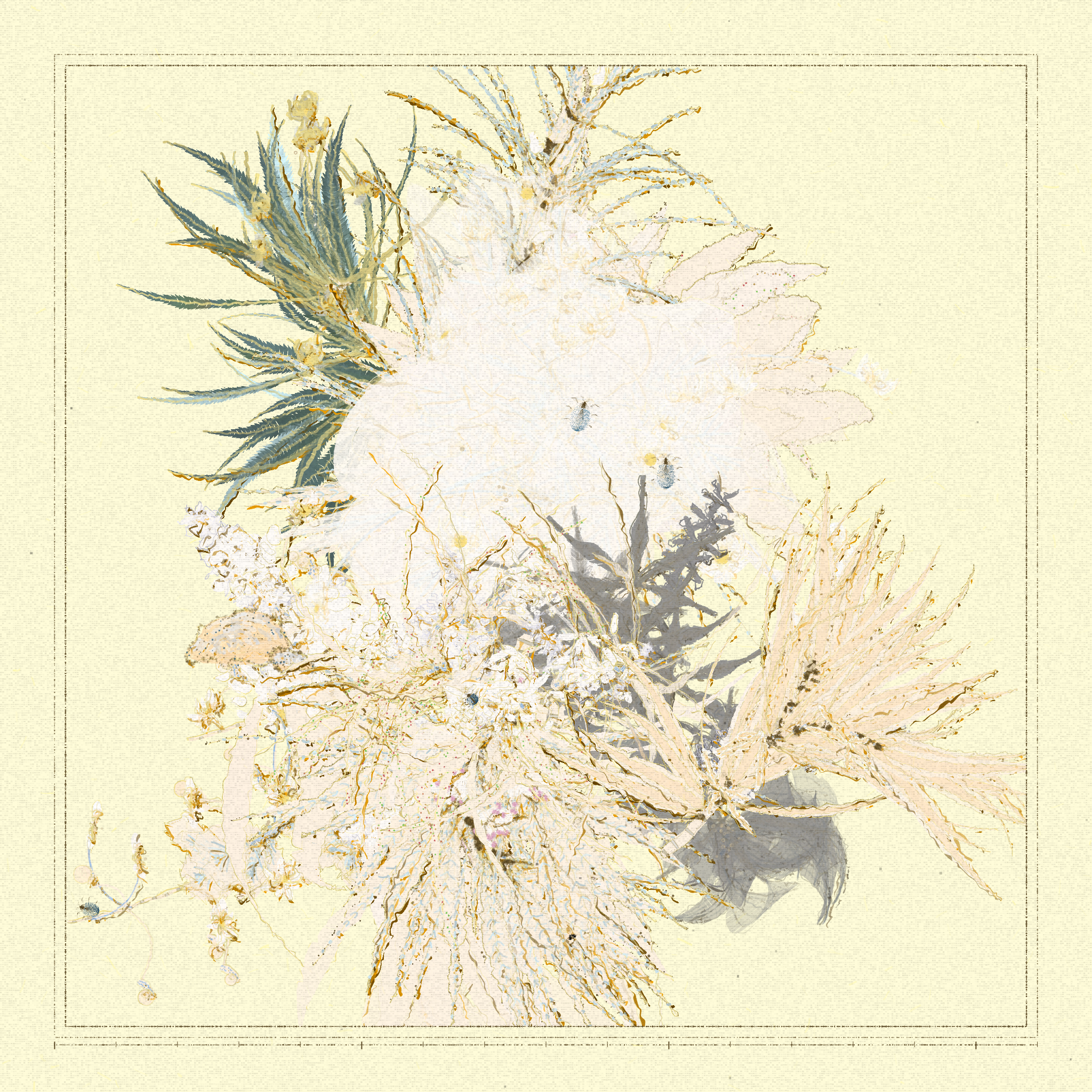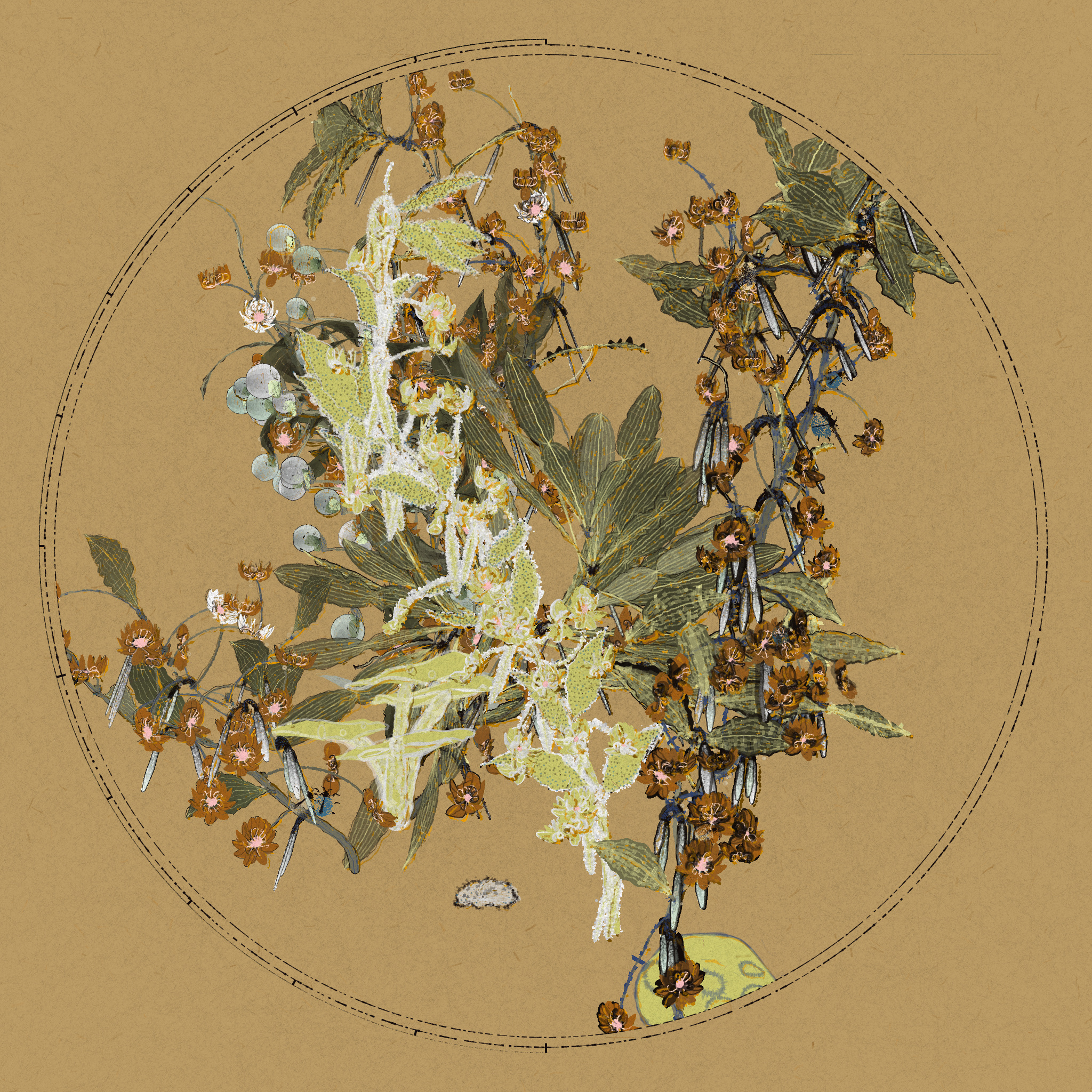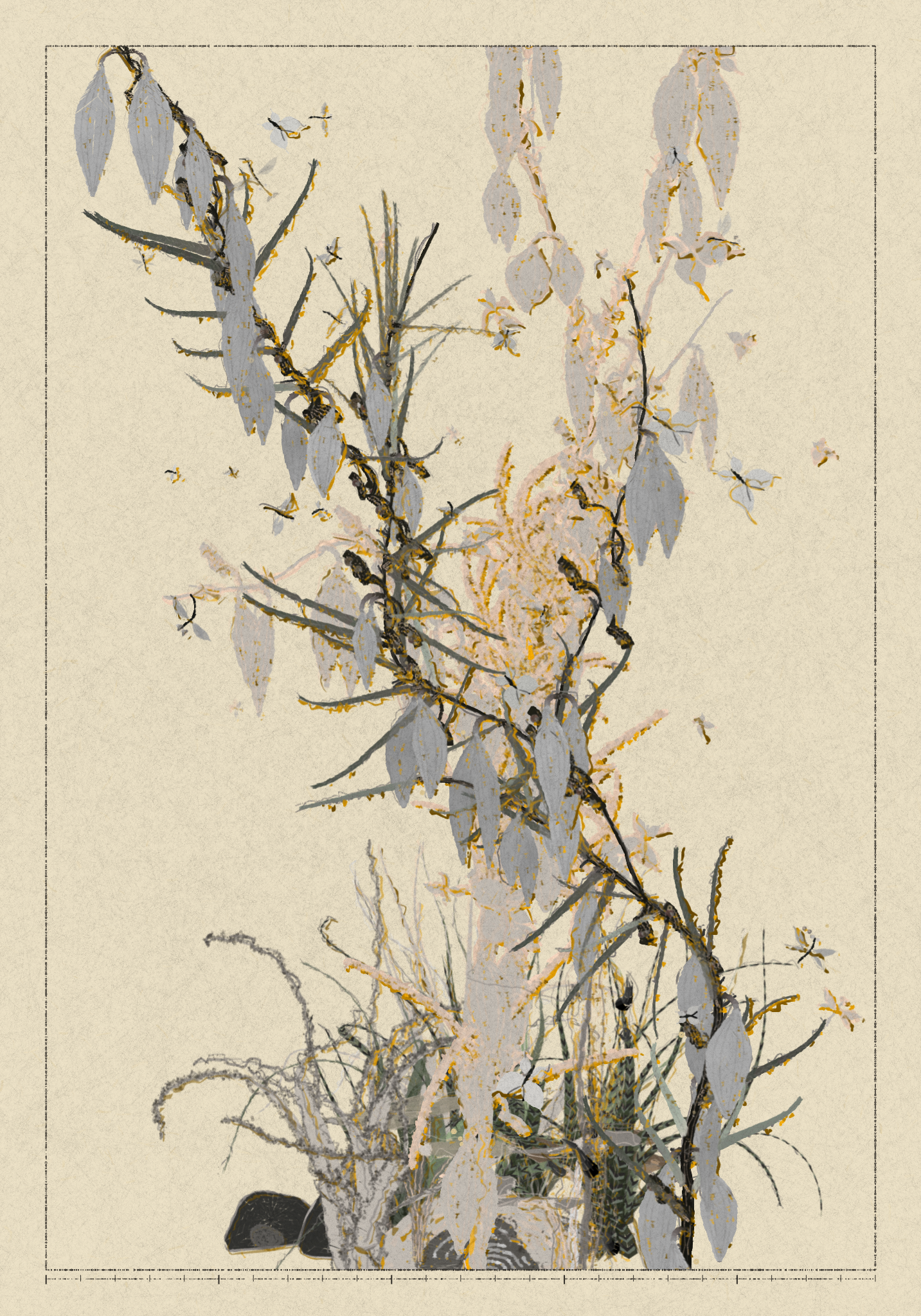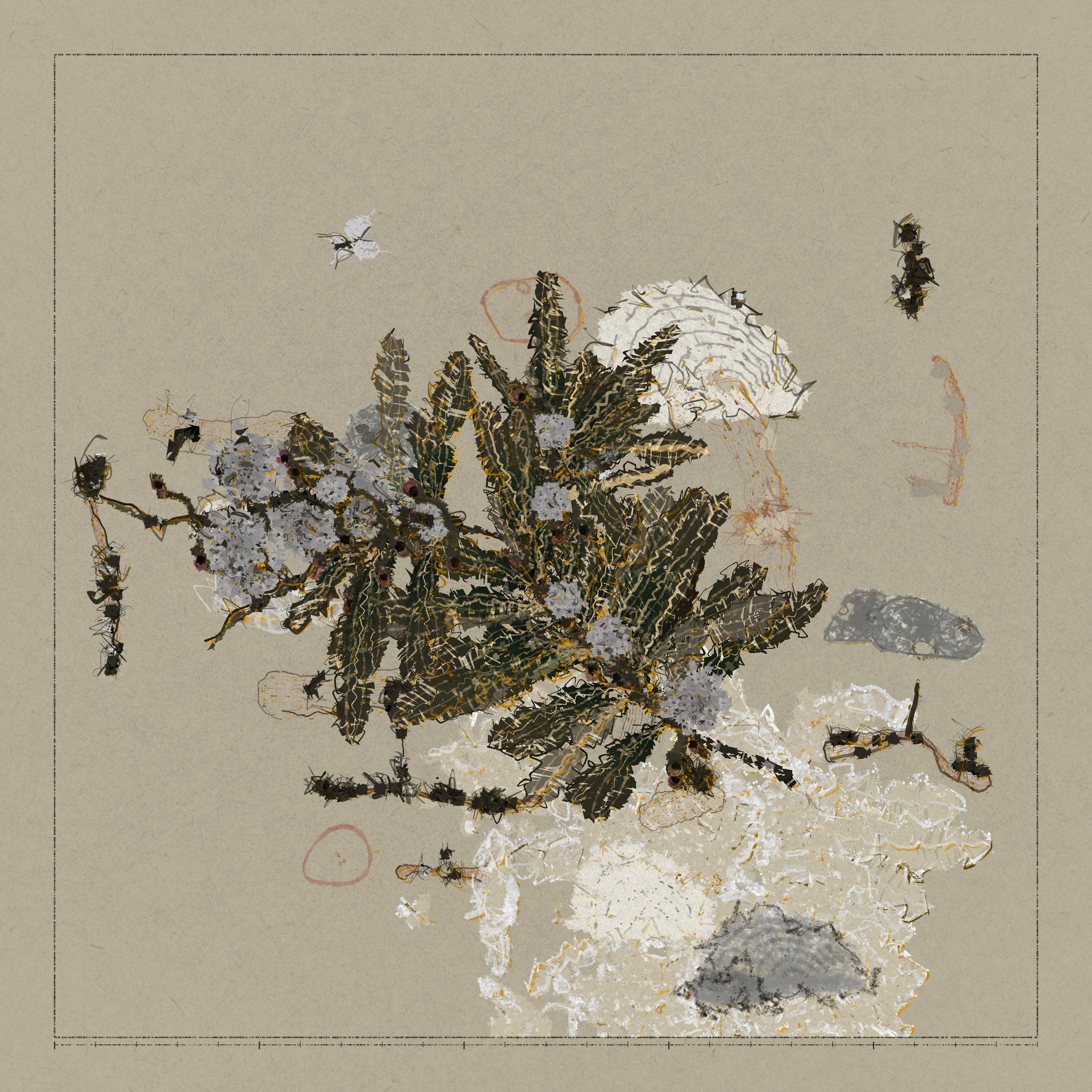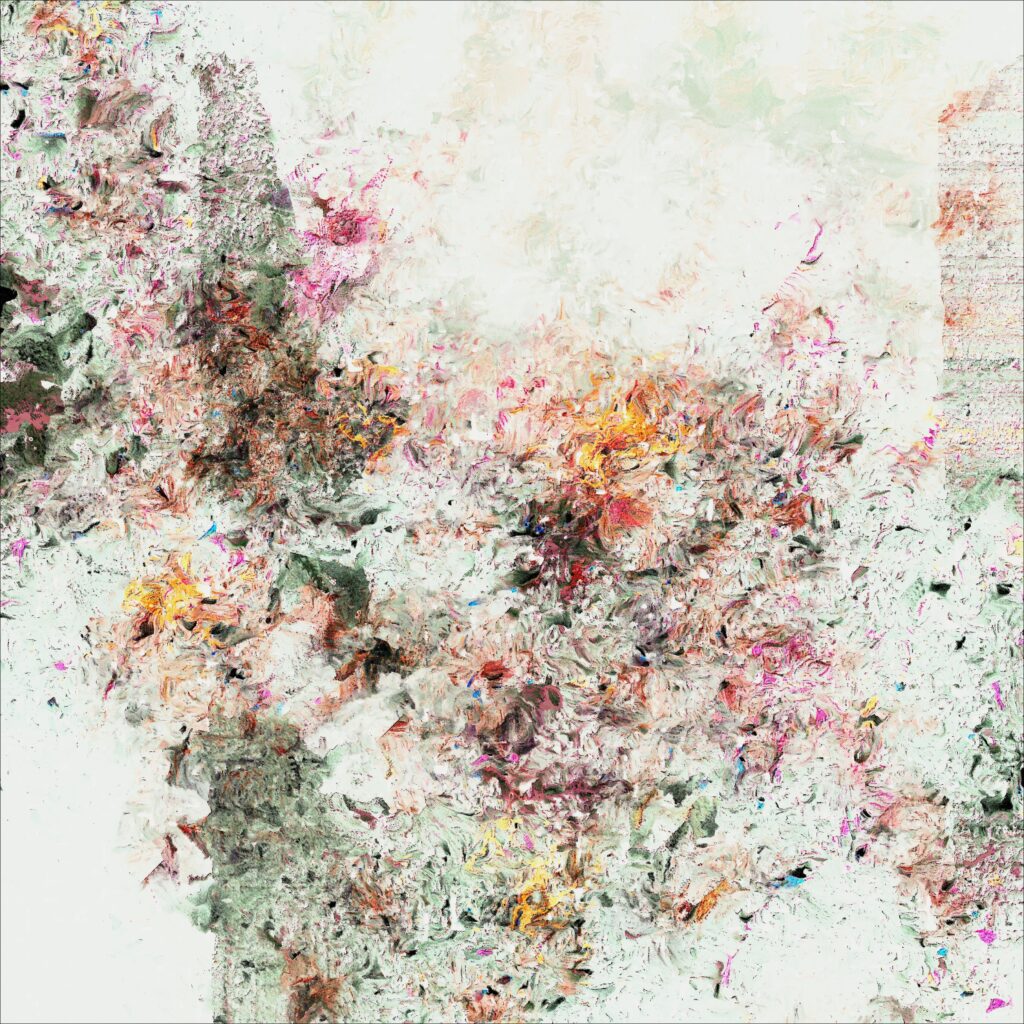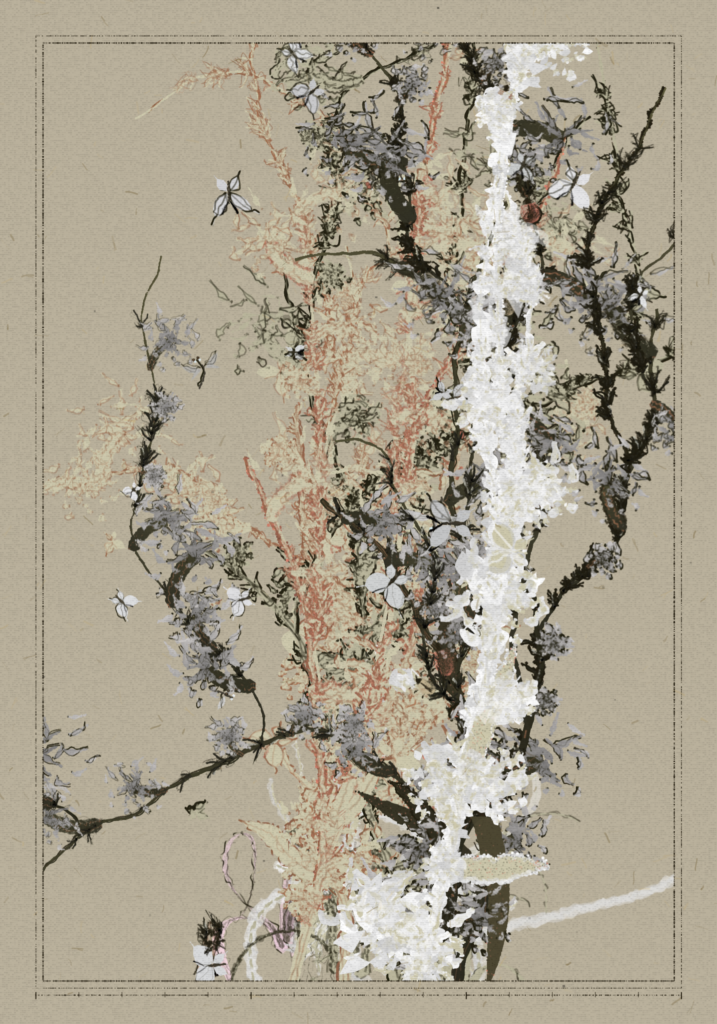
In nature, every plant emerges like a finely tuned set of parameters in motion.Phyllotaxy may present as opposite, alternate, or whorled; internode length adjusts with light; leaf margins vary between entire, serrated, or undulate.The angles of branching and the density of nodes together compose the posture and rhythm of a plant’s body.
These seemingly incidental traits are in fact the product of a deep and intricate logic—one shaped by time, adaptation, and systemic interaction.
To me, nature is the earliest and most profound generative artist.
Generative art, in this sense, becomes a way of reading its original language.Polypaths is a system I have cultivated since 2023.
In truth, its foundations were laid even before Equinox was completed.
It does not aim to imitate plants, but to understand them—
to explore how they branch, how they negotiate limits,
and how they thrive in the tension between order and chaos.
Each version of the work begins with the same initial conditions,
yet diverges through subtle shifts to form an outcome that is entirely unique.
This uncertainty is not mere randomness, but a structured openness—
a reverent acknowledgment of the world’s inherent multiplicity.
In programming, a “fork” refers to version control—
a split in the timeline where new possibilities emerge.
In life, a fork is a decision, a turning point, the shape of a fate.
And in Polypaths, it becomes the aesthetic core:
Each of us is shaped through countless bifurcations,
continuously generated by the choices we make.
